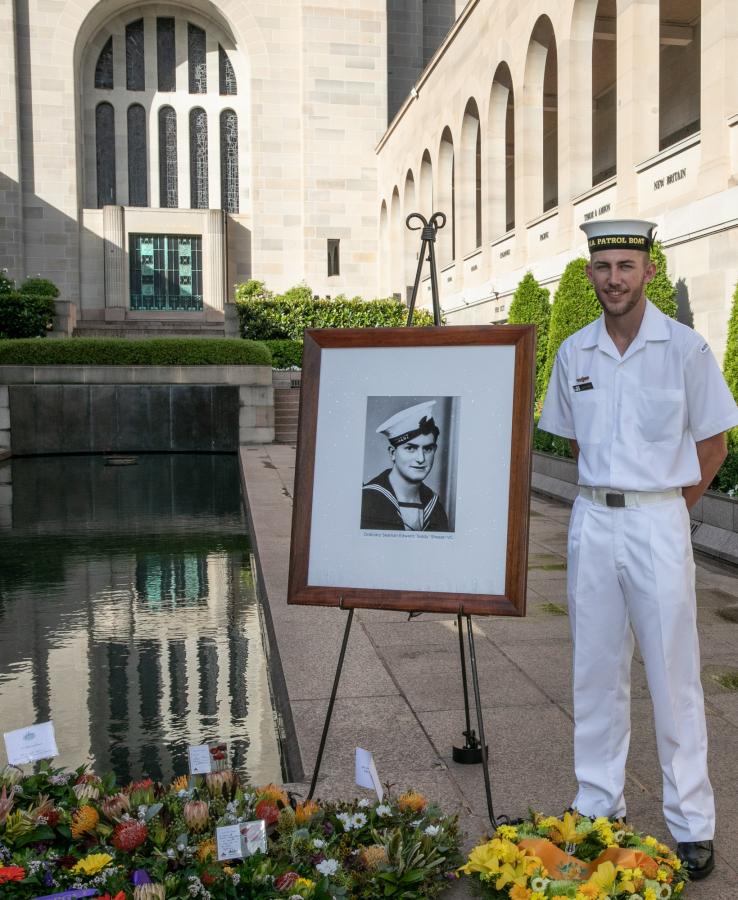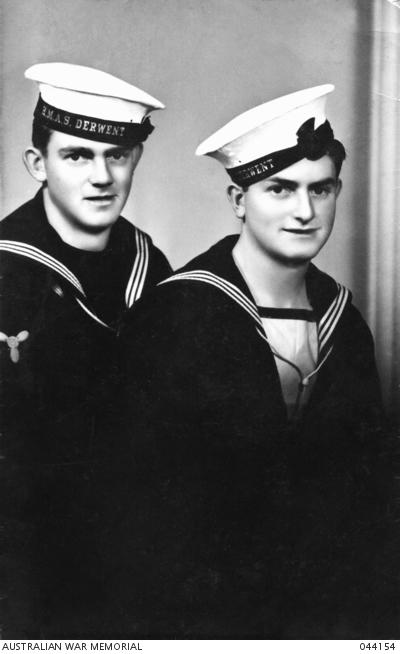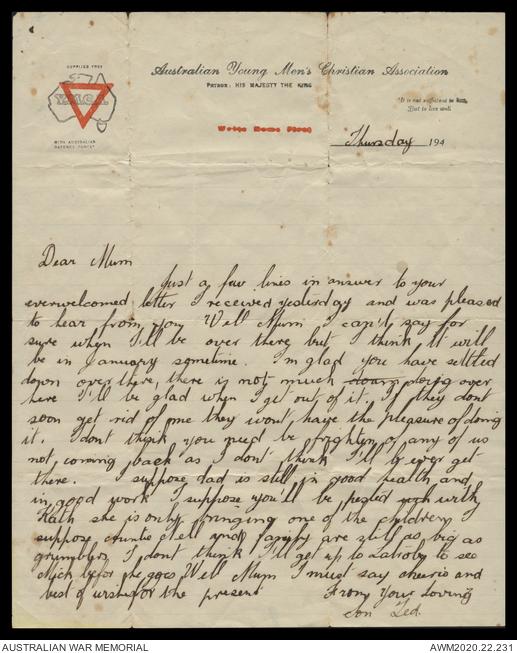“To say it’s very special; that’s an understatement."
When Ordinary Seaman Teddy Sheean wrote a letter to his mother during the Second World War, he couldn’t have known it would be his last.
The youngest of 14 surviving children, Teddy was born in December 1923, and grew up in the small country town of Latrobe in the north of Tasmania.
He was just 18 years old when he defied orders to abandon ship as the rapidly-sinking HMAS Armidale came under heavy attack by Japanese aircraft in the Timor Sea on 1 December 1942.
Instead, Teddy, the youngest member of the crew, strapped himself to an anti-aircraft gun, blazing away at enemy planes as they strafed his crewmates in the water. Although badly wounded in the chest and back, he kept firing as the ship disappeared beneath the waves. Of the 149 men on board Armidale, 49 survived thanks to Teddy’s actions that day.
Seventy-eight years after he sacrificed his life to save others, Teddy was awarded Australia’s highest military honour for acts of bravery during wartime.

The Victoria Cross was presented to his family at an investiture ceremony at Government House in Canberra on the anniversary of his death and is now on permanent display in the Hall of Valour at the Australian War Memorial.
It is the 101st to be awarded to an Australian, and the first to be awarded to a member of the Royal Australian Navy.
When Teddy’s sister, Ivy Hayes, passed away in 2004, she left behind one of her most precious possessions – the creased letter Teddy wrote to his “Dear Mum”.
Believed to be the last letter he wrote, it was written on an Australian Young Men’s Christian Association letterhead bearing the quote: “It is not sufficient to live, but to live well.”
The letter is now displayed at the Memorial alongside Teddy’s medals. It was read by 18-year-old Tasmanian Seaman Blair Allie at a special ceremony in Teddy’s honour.
“I’ll remember the last three days for the rest of my life,” Blair said.
“I’m the same age as Teddy was, and for Teddy to strap himself into that gun is incredible to say the least; I couldn’t imagine having to do that.
“I’ve got my whole life ahead of me, and so did Teddy, and for it to be cut short, is very upsetting. It’s way too young to die.”
Like Teddy, Blair was 17 years old when he enlisted in the Royal Australian Navy. He has served on HMAS Armidale [II] and is currently posted to the Royal Australian Navy Armidale Crew Support Facility in Darwin.

“I always wanted to join the navy,” he said. “Ever since I was a younger fellow; I’ve always been into boats and the water, so I thought I would give it a crack and see where it takes me … and here we are. I love it. It’s awesome. It’s the best thing I’ve ever done.”
He travelled to Canberra for the first time to read Teddy’s letter.
“It was always a dream to come to the Memorial so to finally be able to do it is just amazing,” he said.
“I couldn’t believe it. I was lost for words. As soon as I walked in, I just gasped. I didn’t know what to say. Pictures don’t compare to seeing it in real life. You really have to come here to fully appreciate it.
“I spent six hours walking around inside the Memorial looking at the First and Second World War galleries and so forth, and listening to the audio tour and reading people’s stories … I learnt so much I didn’t know.
“To say it’s very special; that’s an understatement.
“Teddy’s story really inspires me to push forward and keep going no matter how hard life gets.
“What he did was pretty courageous … and it’s been an absolute honour to get up and read that letter and to have his family come to me afterwards and say it brought a tear to their eyes.
“It was very touching, and very special to be a part of it …
“It’s something I will remember and treasure forever.”
